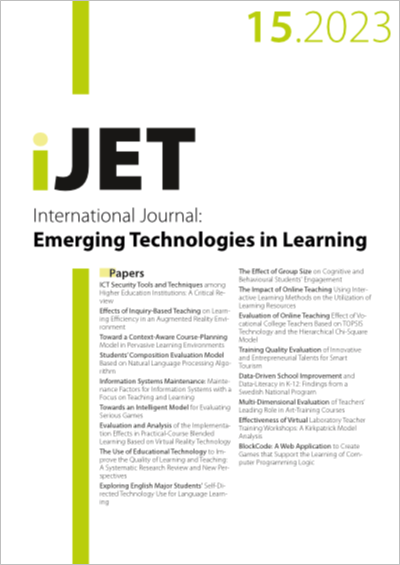Exploring English Major Students’ Self-Directed Technology Use for Language Learning
DOI:
https://doi.org/10.3991/ijet.v18i15.40711Keywords:
self-directed learning, theory of planned behavior, higher education, technology use for language learningAbstract
English, as a foreign language education, requires students to be taught in the classroom and participate in additional hands-on activities outside the classroom using technology resources or non-technology. However, language learners rarely use technology to learn outside the classroom, and types of technology have been limited. Therefore, it is crucial to provide language learners with various technology resources to enhance their learning experience and motivate them to continue practicing outside the classroom. The study aimed to provide insights into factors influencing students’ self-directed technology use for language learning. The study findings can help design effective language-learning programs integrating technology and enhancing self-directed learning. The study, which included 167 English major students, employed quantitative methods and an adapted questionnaire. Multiple Linear Regression, Pearson Correlation, and descriptive statistics helped quantitatively analyze the data. The findings show that the three factors—attitude toward an act or behavior, subjective norm, and perceived behavioral control—are highly correlated. Furthermore, the subjective norm was the most significant influence, and attitude toward action or behavior was the least. Teachers should focus on creating a positive social norm around self-directed technology use for language learning and encourage students to perceive it as socially desirable. Additionally, they can work on improving students’ attitudes toward technology by highlighting its benefits and providing opportunities for hands-on practice.
Downloads
Published
How to Cite
Issue
Section
License
Copyright (c) 2023 Chi Pham Kim, Anh Nguyen Thi Tuong, Nhi Nguyen Ngoc Tuyet, Nhi Phan Yen, Han Nguyen Huynh Kha

This work is licensed under a Creative Commons Attribution 4.0 International License.



